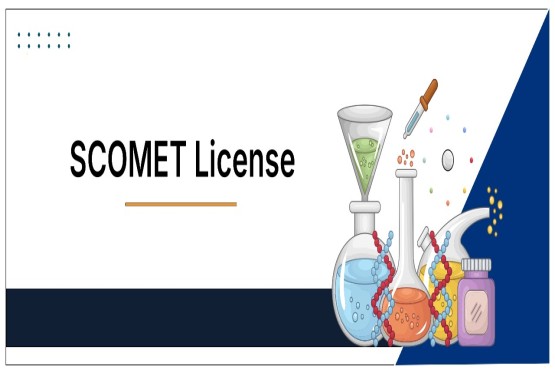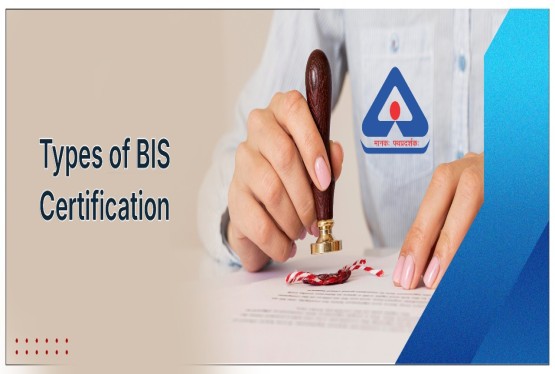In India, two-wheelers remain one of the most widely used modes of transportation. Whether it's directing daily traffic, commuting to work, or riding for leisure, motorcycles and scooters are everywhere. But with convenience comes risk. Road safety remains a major concern, especially for two-wheeler riders who are more vulnerable in accidents. A helmet, though a simple piece of gear, plays a vital role in saving lives by preventing severe head injuries during crashes.
To make sure that helmets sold in India meet safety and quality standards, the Bureau of Indian Standards (BIS) has established certification requirements. Among them, IS 4151:2015 is the key standard that sets the benchmark for protective helmets for two-wheeler riders. Helmets that meet this standard are awarded the ISI mark, a symbol of trust, safety, and legal compliance. This article provides a detailed explanation of BIS ISI certification for helmets in India.
BIS ISI Certification for Helmets
The BIS ISI mark is a stamp of quality and safety that is highly respected in the Indian market. BIS, or the Bureau of Indian Standards, is the national standards body in India responsible for developing and maintaining product safety benchmarks. The ISI (Indian Standards Institute) mark, issued by BIS, is used to show that a product complies with Indian Standards.
For helmets, BIS has established IS 4151:2015, a specific standard that outlines the technical and safety requirements for protective helmets used by two-wheeler riders. A helmet bearing the ISI mark indicates that it has passed rigorous quality checks and safety tests. This certification not only assures consumers of the helmet’s effectiveness in protecting the head during accidents but also ensures manufacturers maintain consistent quality control in their production process.
Why BIS ISI Certification is Mandatory for Helmets?
Ensuring Rider Safety
The most important reason for BIS ISI certification is to ensure maximum protection for riders. Helmets that meet IS 4151:2015 are tested for various important parameters like impact absorption, chinstrap strength, penetration resistance, and retention system performance. These tests are designed to simulate real-world accidents and ensure the helmet can withstand such forces. Certified helmets are more reliable in minimizing the risk of head injuries and fatalities.
Guaranteeing Quality and Performance
BIS certification is not just about safety—it also enforces strict quality assurance. Manufacturers are required to use high-quality raw materials, follow standard operating procedures, and maintain detailed quality checks throughout the manufacturing process. This ensures that every helmet produced meets the same performance and durability standards.
Legal Requirement in India
Under Indian law, it is mandatory to wear helmets that are BIS-certified. Non-compliance can result in fines or other penalties. Furthermore, the Ministry of Road Transport and Highways has banned the manufacture, sale, and use of non-ISI-marked helmets in India. Wearing an uncertified helmet is not only dangerous but also a violation of legal norms.
Enhancing Consumer Trust
The ISI mark is a symbol of trust. Consumers actively look for this mark while purchasing helmets. It assures them that the product is authentic, safe, and approved by a recognized authority. Helmets with BIS ISI certification gain better acceptance and visibility in the market compared to non-certified ones.
Registration Process of BIS ISI Certification for Helmets
The process to obtain BIS ISI certification for helmets under IS 4151:2015 is detailed and involves several steps to ensure that only safe and compliant helmets reach the market.
Step 1: Customizing the Manufacturing Unit
Before applying for certification, the manufacturer must set up the production facility according to the requirements of the BIS standard. This includes establishing quality control labs, testing equipment, and a documented process for consistent production.
Step 2: Application Submission
The manufacturer must fill out the application form for ISI mark certification and submit it along with all the required documents. The application can be filed online and is to be submitted to the concerned BIS branch office. All data, including technical details, test reports, and factory layout, must be accurate and complete.
Step 3: Submission of Documents
Several supporting documents are needed for the certification process. These include:
• Company registration certificate
• Proof of Indian residency
• Utility bills and ownership/lease agreement for the factory
• Product test reports
• Flowchart of the manufacturing process
• List of directors
• Insurance policy
• Details of in-house testing equipment
• Calibration certificates
• Bank statement copy
These documents are essential for BIS to verify the authenticity and preparedness of the manufacturer.
Step 4: Factory Audit and Inspection
Once the application is processed, BIS officials conduct a factory inspection. This involves a detailed audit of the manufacturing infrastructure, production processes, and quality control measures. BIS also collects random helmet samples from the production batch for further lab testing.
Step 5: Testing of Product Samples
The collected samples undergo extensive testing in BIS-approved labs. The helmet is subjected to multiple tests, such as:
• Impact Absorption Test
• Penetration Resistance Test
• Chinstrap Strength Test
• Retention System Test
• Water Absorption Test
• Heat and Flame Resistance
• Electrical Resistance Test
• Corrosion Resistance for Metal Parts
Each of these tests ensures the helmet’s strength, durability, and ability to protect the rider in various situations.
Step 6: Rectification of Non-Conformities
If the inspection team points out any shortcomings, the manufacturer must correct the issues and submit proof of rectification. Only after addressing all non-conformities will the process move forward.
Step 7: Grant of Certification
Once all test results and audit reports are satisfactory, BIS grants the ISI mark license to the manufacturer. The license allows the manufacturer to use the ISI mark on their helmets and packaging materials.
Step 8: Payment of Annual Licence Fees
The manufacturer must pay the annual licence fees and surveillance charges as required by BIS. This ensures the continuation of certification for the permitted period.
Ongoing Compliance and Renewal of BIS ISI Certificate
BIS certification is not a one-time event. To retain the ISI Registration Certificate, the manufacturer must maintain ongoing compliance through regular surveillance and testing. BIS conducts periodic inspections and collects market samples to ensure that quality standards are being maintained.
The ISI certificate must be renewed every one or two years, depending on the license terms. Renewal involves submitting updated documents, test results, and continued payment of renewal fees.
Importance of Displaying the ISI Mark
After receiving the license, the ISI mark must be displayed clearly on the helmet and packaging. This mark indicates that the product is certified and conforms to IS 4151:2015. Displaying the mark not only helps in legal compliance but also enhances the brand’s market reputation and credibility among buyers.
Market Promotion of Certified Helmets
Manufacturers should highlight their BIS certification and ISI mark in all promotional and branding activities. Displaying this certification prominently on websites, catalogs, advertisements, and social media improves market visibility and consumer trust.
Criteria in BIS Certification for Helmets
Several safety and performance aspects are checked before a helmet is certified:
Impact Resistance
This is the most crucial safety feature of any helmet. The outer shell and inner foam lining must absorb and distribute the force of an impact to protect the skull and brain from injury. ISI certification ensures that the helmet meets the required shock absorption levels.
Retention System and Chinstrap
A good helmet must stay in place during a crash. The retention system, including the chinstrap, must be strong and secure enough to hold the helmet on the rider’s head even during impact. ISI standards define strength and flexibility criteria for these parts.
Field of Vision
Helmets should allow a clear and wide field of vision to the rider. This includes side vision and the visibility of traffic around. Helmets that obstruct vision increase the risk of accidents.
Comfort and Weight
Heavy helmets can cause fatigue and discomfort during long rides. ISI-certified helmets are designed to be lightweight and comfortable, which encourages more riders to wear them regularly.
Ventilation and Ergonomics
Proper ventilation and breathable linings are also considered under ISI standards to ensure the helmet is comfortable for long-term usage, especially in India’s hot and humid climate.
Final Thoughts
The BIS ISI certification under IS 4151:2015 is a vital requirement for helmet manufacturers in India. It is not just a legal mandate but a life-saving assurance for consumers. Helmets that pass BIS tests ensure durability, impact resistance, comfort, and retention—all essential for protecting riders on Indian roads.
Manufacturers must take this certification seriously and treat it as a commitment to road safety and product excellence. By following the process diligently and working with experienced consultants like Compliance Calendar, brands can not only achieve compliance but also gain consumer trust and grow their market presence.
Helmets are not just accessories; they are essential tools of safety. Let’s promote only certified, tested, and trusted helmets for the safety of every two-wheeler rider in the country.
To connect with Compliance Calendar experts, you can mail at info@ccoffice.in or Call/Whatsapp at +91 9988424211.
FAQs
Q1. Is BIS ISI certification mandatory for all helmets sold in India?
Ans. Yes, BIS ISI certification is mandatory for all helmets intended for use by two-wheeler riders in India. According to government regulations and a notification from the Ministry of Road Transport and Highways, it is illegal to manufacture, sell, or use helmets that do not bear the ISI mark conforming to IS 4151:2015. Wearing uncertified helmets can lead to legal penalties and increased safety risks.
Q2. What is IS 4151:2015 in the context of helmet certification?
Ans. IS 4151:2015 is the Indian Standard issued by the Bureau of Indian Standards (BIS) for protective helmets used by two-wheeler riders. It specifies safety and performance requirements such as impact absorption, penetration resistance, retention system strength, field of vision, and heat/flame resistance. Helmets that meet this standard are eligible to receive the ISI mark, ensuring they are safe for use on Indian roads.
Q3. Who can apply for BIS ISI certification for helmets?
Ans. Only manufacturers—either Indian or foreign—who produce the finished helmet product can apply for BIS ISI certification. Traders, distributors, or importers are not eligible for applying. The manufacturer must have an operational production unit, proper testing equipment, and quality control systems in place to obtain the certification.
Q4. What are the documents required for BIS ISI certification of helmets?
Ans. To apply for BIS ISI certification for helmets, the manufacturer needs to submit several documents, including:
• Company registration certificate
• Proof of Indian residency
• Manufacturing process flowchart
• Utility bills and property documents
• Product test reports
• List and calibration of in-house testing equipment
• Factory layout plan
• Details of directors
• Copy of insurance policy and bank statement
These documents help BIS verify the authenticity, infrastructure, and readiness of the manufacturer for certification.
Q5. What are the tests conducted on helmets for BIS ISI certification?
Ans. Helmets undergo a series of rigorous tests to ensure safety and durability, including:
• Impact absorption test
• Penetration resistance test
• Retention system test
• Chinstrap strength test
• Heat and flame resistance test
• Water and electrical resistance tests
• Corrosion resistance for metal parts
Only helmets that pass all these tests are granted the ISI certification under IS 4151:2015.
Q6. How long is the BIS ISI certification valid for helmets?
Ans. The BIS ISI certification is usually valid for one to two years, depending on the license conditions. However, manufacturers must maintain ongoing compliance through regular factory inspections and testing. After the validity period, the certification must be renewed by submitting updated documents, reports, and renewal fees to BIS.
Q7. Can Compliance Calendar help with BIS ISI certification for helmets?
Ans. Yes, Compliance Calendar offers professional assistance throughout the entire BIS ISI certification process. From document preparation, coordinating with BIS authorities, managing sample testing, to post-certification support, they help manufacturers streamline the entire process. They also provide trademark registration and other legal services to ensure full compliance and smooth business operations.












































































_crop10_thumb.jpg)







_Rules,_2025_learn_crop10_thumb.jpg)























































































_crop10_thumb.jpg)




